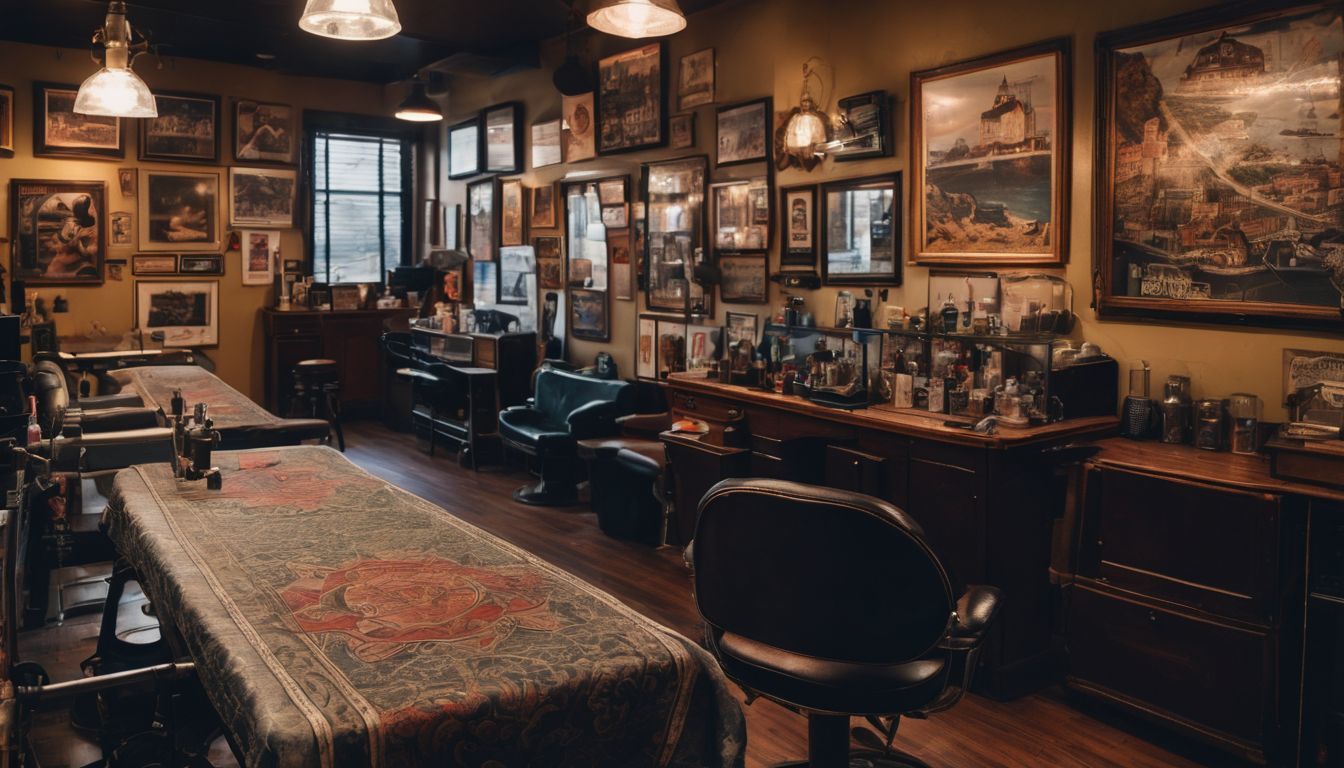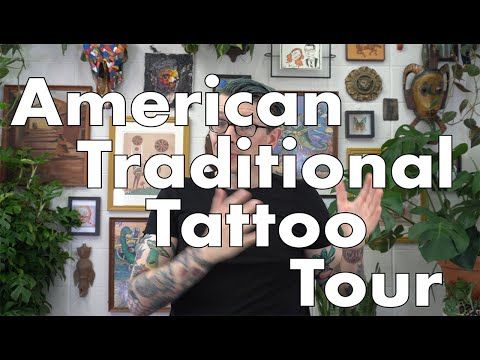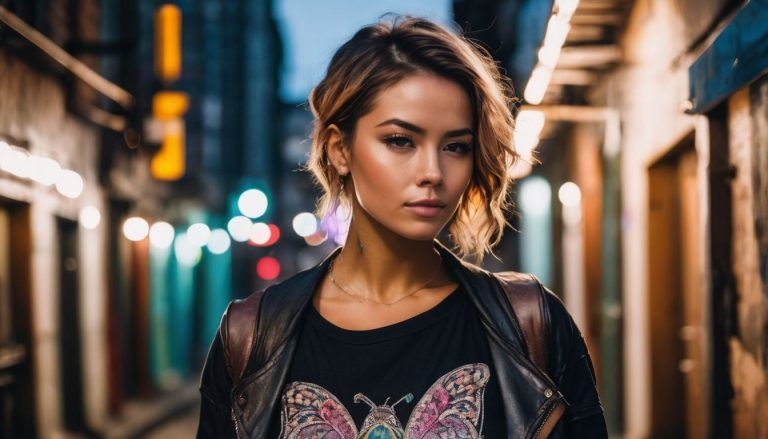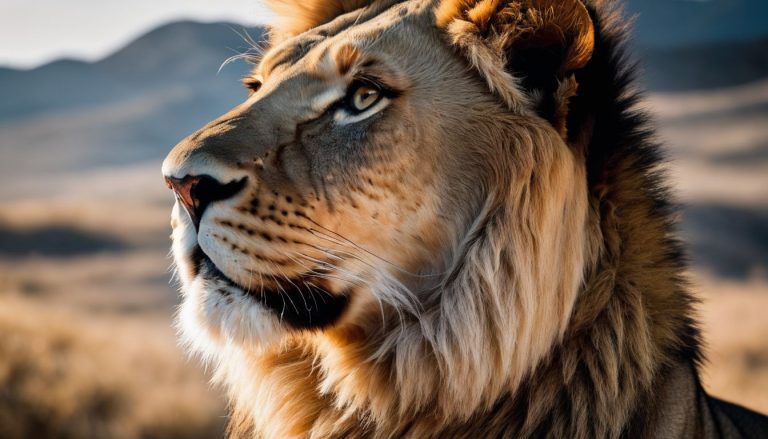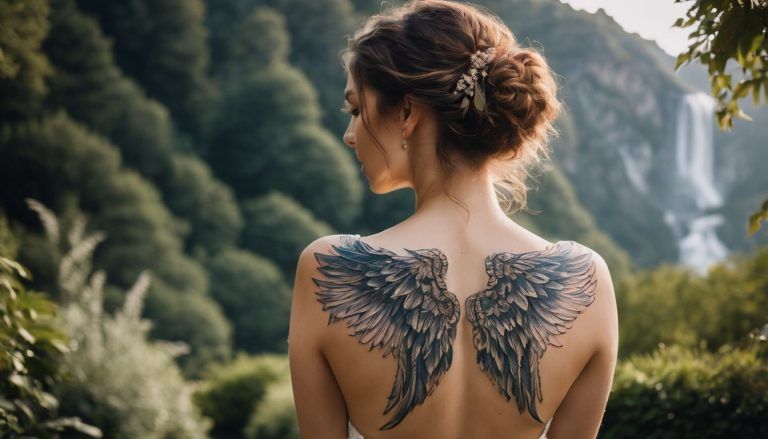The Timeless Appeal of Traditional Style Tattoos: A Complete Guide
Choosing a tattoo design that will remain timeless and significant can be challenging. Traditional style tattoos have captivated people for centuries with their bold lines and vibrant colors.
This guide will explore the history, styles, and artists behind these iconic ink designs, helping you make an informed decision for your next piece of body art. Discover why these classics never fade away!
Key Takeaways
- Traditional style tattoos have a history that dates back to ancient cultures with American Traditional becoming prominent in the 18th century, symbolizing sailors’ journeys and experiences.
- Iconic artists like Sailor Jerry, Bert Grimm, and Lyle Tuttle greatly influenced traditional tattoo styles with their bold lines and saturated colors.
- Classic motifs found in traditional tattoos include anchors, swallows, roses, eagles, and hearts which are chosen for both their aesthetic appeal and cultural significance.
- Proper aftercare is crucial to maintain the vibrancy of traditional tattoos over time; this includes cleaning, moisturizing regularly, protecting from the sun’s UV rays, avoiding soaking in water bodies until healed completely, wearing loose clothing to avoid irritation during healing periods and attending follow-up appointments for any touch-ups needed.
- There are various types of traditional tattoos such as American Traditional with its limited primary color palette; Neo-traditional which blends classic techniques with modern details; Japanese Traditional known for its deep symbolism; Tribal that connects wearers to indigenous roots.
History of Traditional Style Tattoos
Traditional style tattoos have a rich history, with origins dating back to ancient cultures like the Polynesians and Egyptians. Over time, traditional tattooing has evolved and been influenced by various cultures, making it a timeless art form.
Origins of Traditional Style
The roots of traditional style tattoos stretch deep into history, with American Traditional leading the charge since the 18th century. Sailors initially embraced these bold tattoo designs, using them as symbols of their journeys and experiences at sea.
The classic look features thick lines and saturated colors that pop against the skin, making each design stand out. Old school icons like anchors, ships, and swallows began to tell stories on sailors’ skin long before they became mainstream.
Iconic artists like Sailor Jerry helped forge a path for what we now recognize as vintage tattoo styles. He infused elements from Asian art into his work while keeping the cartoonish quality that old school tattoos are known for.
These artists set a foundation that supported generations of tattooists who preserve and evolve this timehonored art form. RuntimeMethods used back then still influence traditional tattoo techniques today—ensuring these historic aesthetics continue to captivate fans worldwide.
Influence & Evolution
American traditional tattoos have been heavily influenced by various cultures and art styles throughout history. The roots of this iconic tattoo style can be traced back to the 18th century, primarily shaped by the work of sailors and the blending of different cultural symbols.
Throughout its evolution, traditional tattoos have retained their bold lines, limited color palette, and classic motifs which continue to appeal to people across generations. The influence of renowned artists like Sailor Jerry, Bert Grimm, and Lyle Tuttle has played a significant role in shaping the style and technique of traditional tattoos, ensuring its enduring popularity over time.
As American traditional tattoos continue to evolve alongside modern tattooing techniques and trends, the timeless appeal remains intact due to its rich history and cultural significance.
Opal Lotus Houston’s expertise in creating both classic American Traditional styles as well as modern interpretations further illustrates how this iconic tattoo trend continues to adapt while maintaining its historic charm.
Style & Technique of Traditional Tattoos
Traditional tattoos are known for their bold, thick lines and a limited color palette of saturated hues. The iconic motifs in traditional tattooing have been a timeless favorite among tattoo enthusiasts.
Bold, Thick Lines
Bold, thick lines are a hallmark of traditional style tattoos, giving them a distinct and iconic appearance. The use of strong, solid lines not only allows the designs to stand out but also contributes to their longevity and clarity over time.
These lines are often used to outline the main elements of the tattoo, providing a sharp and defined look that enhances the overall impact of the design. Additionally, bold lines help traditional tattoos maintain their classic appeal, making them easily recognizable and appreciated for their timeless aesthetic.
The bold nature of these lines ensures that traditional tattoos remain striking and vibrant even as they age, preserving their original beauty for years to come. This technique is essential in creating iconic motifs such as anchors, roses, eagles, and other classic designs typically found in American Traditional tattooing.
Limited Color Palette
Traditional style tattoos are known for their limited color palette, typically consisting of primary colors such as red, green, yellow, and blue. This intentional restraint in color choice contributes to the bold and iconic look of traditional tattoos.
By using a limited range of colors, artists can create striking and eye-catching designs that stand the test of time. The use of vibrant hues like red and yellow against black outlines adds depth and dimension to the tattoo, enhancing its timeless appeal.
The limited color palette in traditional style tattoos allows for a focus on strong contrasts and simple yet impactful imagery. This classic approach ensures that traditional tattoos continue to captivate enthusiasts with their enduring visual impact while honoring their rich cultural heritage.
Iconic Motifs
Moving from the limited color palette of traditional tattoos, it’s essential to explore the iconic motifs that define this timeless art form. Traditional tattoos are renowned for their classic imagery, often featuring symbols such as anchors, roses, hearts, eagles, and swallows.
These motifs hold rich cultural significance and have been passed down through generations. Tattoos like these carry meanings that are deeply rooted in history and tradition – for example, an anchor symbolizing stability and a swallow representing safe return home.
Such iconic designs continue to captivate tattoo enthusiasts worldwide and have become synonymous with the enduring appeal of traditional style tattoos.
These classic motifs not only showcase artistic craftsmanship but also serve as visual storytelling elements within the world of traditional tattoos. Their bold lines and striking imagery make them instantly recognizable, creating a sense of nostalgia while maintaining relevance in contemporary tattoo culture.
Famous Traditional Tattoo Artists
Sailor Jerry, Bert Grimm, and Lyle Tuttle are just a few of the iconic traditional tattoo artists who have left an indelible mark on the industry. Their timeless designs continue to inspire and influence contemporary tattoo culture.
Sailor Jerry
Sailor Jerry revolutionized the world of traditional tattoos with his iconic designs, bold lines, and vivid colors. He was known for his expertise in American Traditional style, creating timeless motifs such as anchors, swallows, and pin-up girls.
His impactful influence on the tattoo industry is still felt today, as many artists continue to draw inspiration from his classic work.
His dedication to preserving the integrity of traditional tattoos has solidified his legacy as one of the most influential figures in tattoo history. Sailor Jerry’s impact extends beyond his artistry – he also played a pivotal role in elevating the status of tattooing as a respected form of art.
His commitment to excellence and unwavering passion for traditional tattoos continues to inspire artists and enthusiasts worldwide.
Bert Grimm
Bert Grimm, a legendary figure in the world of traditional tattoos, is renowned for his iconic contributions to the classic tattoo style. With a career spanning several decades, Grimm’s work has left an indelible mark on the industry.
His designs often feature bold lines and vibrant colors, creating timeless pieces that continue to inspire artists and enthusiasts alike. The distinctive motifs and historic aesthetic of Bert Grimm’s traditional tattoos have solidified his enduring legacy in the tattoo community.
– Lyle Tuttle
Lyle Tuttle
Bert Grimm was a legendary figure in traditional tattoo art, and another influential personality in this realm is Lyle Tuttle. Tuttle gained prominence during the 1960s and 1970s for his exceptional talent and contribution to traditional tattoos.
He became renowned for his artistic skill, particularly through bold lines and vivid colors that characterized his work. His mastery extended across various styles, from American Traditional to other classic designs, making him an iconic figure in the tattoo world.
Tuttle’s impact on traditional tattoos continues to be felt today; he not only popularized timeless motifs such as eagles, anchors, and hearts but also played a pivotal role in elevating the status of tattoos as legitimate forms of artistic expression.
Types of Traditional Tattoos
From American Traditional to Japanese Traditional, there are various styles of traditional tattoos that hold timeless appeal. To learn more about the different types and their unique characteristics, keep reading!
American Traditional
American Traditional tattoos, also known as Old School or Western traditional, are characterized by bold outlines, vibrant colors, and iconic designs. These classic tattoos gained popularity in the 18th century and continue to be sought after for their timeless appeal.
The motifs often include symbols like eagles, roses, anchors, and hearts, each with its own significant meaning. With a limited color palette dominated by primary colors such as red, yellow, green, and blue paired with black outlines, these tattoos stand out with their striking visual impact.
Tattoo enthusiasts appreciate American Traditional designs for their rich history and enduring cultural significance. Artists like Sailor Jerry played an integral role in popularizing this style during the mid-20th century.
Neo-Traditional
Moving on from the classic American Traditional style, Neo-Traditional tattoos are a modern twist on the timeless appeal of traditional designs. This style incorporates bold lines and a limited color palette, like its predecessor, but adds more intricate detail and shading.
Neo-traditional tattoos often feature a mix of old school motifs with contemporary elements, creating vibrant and dynamic pieces that still pay homage to traditional tattoo aesthetics.
With their fusion of classic techniques and innovative artistry, neo-traditional tattoos continue to captivate tattoo enthusiasts seeking a fresh take on iconic imagery while maintaining the enduring allure of traditional styles.
Japanese Traditional
Moving from the bold and vibrant style of Neo-Traditional tattoos, Japanese Traditional tattoos offer a different cultural perspective. Rooted in rich history and symbolism, these tattoos often feature iconic motifs such as koi fish, cherry blossoms, dragons, and geishas.
With a focus on storytelling and tradition, Japanese Traditional tattoos are characterized by intricate details and a limited color palette that typically includes black, red, and shades of gray.
These timeless designs hold deep meanings tied to courage, strength, protection, and prosperity.
Japanese Traditional tattoo artists such as Horiyoshi III have gained international recognition for their mastery of this classic style. The dedication to preserving traditional techniques while infusing personal creativity has contributed to the enduring appeal of Japanese Traditional tattoos among enthusiasts worldwide.
Tribal Traditional
Tribal traditional tattoos have roots that date back centuries, originating from various indigenous cultures across the globe. These designs often incorporate bold lines and geometric patterns, utilizing a limited color palette to create striking and powerful imagery.
Tribal tattoos hold deep cultural significance and are known for their timeless appeal, symbolizing heritage, identity, and spirituality for those who choose to adorn themselves with these classic motifs.
These iconic designs continue to inspire tattoo enthusiasts and artists alike, providing a connection to ancient traditions while also serving as a form of self-expression in contemporary society.
Tattoo Aftercare & Resources for Traditional Tattoos
Proper aftercare is essential for maintaining the vibrancy and longevity of traditional style tattoos. Explore recommended aftercare products and tattoo artist programs to ensure your traditional tattoo looks its best for years to come.
Proper Care
To ensure the longevity and vibrancy of your traditional style tattoo, it is essential to provide proper care. Here are the steps for maintaining the beauty and integrity of your timeless ink:
- Keep it clean: Gently wash your tattoo with mild soap and water to remove any excess ink, blood, or ointment that may have accumulated during the healing process.
- Moisturize regularly: Apply a thin layer of fragrance-free, hypoallergenic moisturizer to keep your tattoo hydrated and prevent excessive dryness or flaking.
- Protect from sun exposure: Shield your tattoo from direct sunlight by using a broad-spectrum sunscreen with at least SPF 30 whenever you are outdoors, as UV rays can cause fading and damage.
- Avoid soaking: Refrain from submerging your new tattoo in water, such as swimming pools, hot tubs, or baths until it is fully healed to prevent infection or color loss.
- Wear loose clothing: Choose breathable fabrics that do not rub or irritate your tattoo to promote proper healing and minimize the risk of scabbing or peeling.
- Attend follow-up appointments: Schedule and attend any recommended touch-up sessions with your tattoo artist to ensure that any areas of uneven color or fading are addressed promptly.
- Stay vigilant for signs of infection: Monitor your tattoo for unusual redness, swelling, pus, or prolonged pain and seek medical attention if you suspect an infection may be developing.
Recommended Aftercare Products
To keep your traditional tattoo looking vibrant and sharp, it’s important to use the right aftercare products. Proper care will ensure optimal healing and long-lasting color retention. Here are the recommended aftercare products:
- Antibacterial ointment: Apply a thin layer of antibacterial ointment to keep the tattoo moisturized and protected from infection.
- Unscented moisturizer: Once the initial healing stage is over, switch to an unscented moisturizer to prevent dryness and maintain the tattoo’s vivid colors.
- Mild soap: Use a gentle, fragrance-free soap to cleanse the tattooed area without causing irritation or fading.
- Sunscreen: Shield your traditional tattoo from sun damage by applying a broad-spectrum sunscreen with a high SPF level whenever it’s exposed to sunlight.
- Healing balm: Consider using a specialized healing balm designed for tattoos to aid in the recovery process and promote healthy skin.
- Non-stick bandages: If your tattoo artist recommends covering the fresh ink, opt for non-stick bandages that won’t stick to the skin and disrupt the healing process.
- Tattoo Artist Programs
Tattoo Artist Programs
After ensuring proper aftercare by using recommended products, individuals interested in becoming a tattoo artist can explore various tattoo artist programs. These programs provide essential training in the art of tattooing, covering topics such as sterilization techniques, safety protocols, and artistic skills required for creating traditional style tattoos.
Aspiring artists can benefit from hands-on experience and mentorship opportunities offered through these programs, gaining valuable insights into the world of classic tattoo designs while honing their craft under the guidance of experienced professionals.
Tattoo artist programs also emphasize the historical significance and cultural context of traditional tattoos, equipping students with a comprehensive understanding of iconic motifs and styles.
Conclusion
In conclusion, traditional style tattoos have an enduring charm that has captivated people for centuries. These classic designs, with their bold lines and iconic motifs, continue to hold immense cultural significance and appeal to a wide range of individuals.
Whether it’s the rich history or the timeless aesthetic, traditional tattoos remain a beloved choice for those seeking meaningful and visually striking body art. Their popularity spans generations and diverse communities, ensuring their place as a revered form of artistic expression in the world of tattooing.
FAQs
1. What makes traditional style tattoos timeless?
Traditional style tattoos are timeless because they feature bold lines, saturated colors, and classic motifs that capture nostalgic symbols and iconic imagery from historic tattoo aesthetics.
2. How do traditional tattoo meanings differ from other styles?
Each traditional tattoo carries a meaning rooted in its origins, such as strength or courage, which differs from more modern styles like realistic or watercolor tattoos that often focus on personal expression.
3. Can you mix old school tattoo style with newer trends?
Yes! Many artists blend the old school tattoo style’s retro appeal with elements of neo-traditional or even Japanese tattoo traditions to create unique pieces.
4. What sets apart traditional tattoos from cartoonish art or watercolor techniques?
Traditional tattoos stand out with their time-honored artistry using solid outlines and a limited but bold color palette unlike the more fluid lines and diverse hues found in cartoonish or watercolor tattoos.
5. Why is there still demand for classic traditional tattoo styles over new ones like realistic or neo-traditional?
Classic traditional tattoos remain popular due to their deeply ingrained place in traditional tattoo culture; they offer a sense of permanency and connection to past generations that newer styles may not always evoke.

